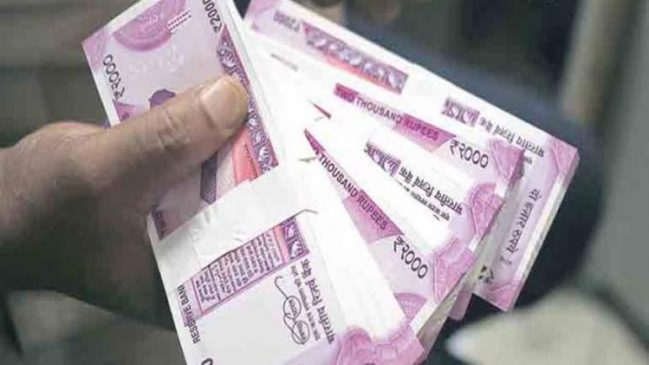RBI monetary policy: The Reserve Bank of India (RBI) Governor Shaktikanta Das today declared the RBI monetary policy committee (MPC) meting outcome keeping status quo on interest rate. The RBI MPC members unanimously decided to keep the repo rate unchanged at 6.50 per cent as banks have enough liquidity to meet their lending demands in near term. The RBI governor re-iterated that RBI MPC decided to maintain status quo as money supply surged 10.10 per cent YoY whereas non-food bank credit grew 15.6 per cent in this time.
Also Read– RBI Monetary Policy: Repo rate remains unchanged at 6.5%
Highlighting upon the money supply leading to surplus money at banking system, RBI Governor Shaktikanta Das said, “The average daily absorption under the LAF increased to ₹1.7 lakh crore during April-May from ₹1.4 lakh crore in February-March. Money supply (M3) expanded by 10.1 per cent y-o-y and non-food bank credit by 15.6 per cent as on May 19, 2023. India’s foreign exchange reserves were placed at $ 595.1 billion as on June 2, 2023.”
However, experts believe that surplus liquidity in the banking and Indian economy has become possible after withdrawal of ₹2000 notes. However, they maintained that better-than-expected GDP of India, strong GST collection, inflation at lower levels of the targeted 2-6 per cent inflation, etc. have also played its role in this RBI monetary policy meeting decision to keep repo rate unchanged.
Also Read– HDFC Bank Hikes MCLR Rates By Up To 15 Bps: EMIs Likely To Go Up
₹2000 notes withdrawal doing the trick
Giving credit to ₹2000 notes withdrawal for this status quo outcome from the RBI MPC meeting, Sujan Hajra, Chief Economist and Executive Director at Anand Rathi said, “Today’s RBI monetary policy rate pause was anticipated. In the wake of a greater-than-anticipated decline in inflation in the recent past, it was anticipated that the monetary policy would shift from a liquidity withdrawal to a neutral stance. However, the MPC has decided to maintain the current stance by a majority vote. This is due to the fact that the demonetization of Rs. 2,000 banknotes has significantly contributed to the recent increase in liquidity.”
However, Anand Rathi expert maintained that RBI’s projections indicate that RBI’s inflation target of 4% will be exceeded each month of the current fiscal year. While the continuation of the RBI’s policy stance is somewhat disappointing, the central bank’s cautious approach in light of upside risks, such as the potential impact of El Nino on India’s monsoon and the continuation of monetary tightening by the world’s major central banks, appears justified and well-articulated. Therefore, we anticipate that the monetary policy announcement will have no effect on the financial markets.
Also Read– Petrol, Diesel Fresh Prices Announced For June 8: Check City-Wise Fuel Rates Here
On why RBI decided to maintain status quo on interest rates despite surplus liquidity after ₹2000 notes withdrawal, Sandeep Bagla, CEO at Trust Mutual Fund said, “It is a pause, and the possibility of the next move being a cut is far higher than that of a hike. Growth remains resilient and the inflation while moderating now, could rise in the future as labour market remains tight and wage-inflation spiral remains a distinct danger. Australia and Canada have raised rates after a pause. We are not out of the woods yet. Liquidity surplus will have to be reduced as Rs.2000 notes seep into the banking system liquidity. It is quite possible that market yields rise by a few basis points as RBI waits for more economic cues amidst continued global contradictory cues on inflation and growth fronts.”
On macro factors that helped RBI maintain status quo on interest rate, Anu Aggarwal, President and Head of Corporate Banking at Kotak Mahindra Bank said, “Leaving the policy rates unchanged was expected with inflation cooling down partly due to base effect and partly with oil at $70 (compared to $ 115 in June 2022). With global macro anyways pulling businesses down, RBI’s action will provide much-needed support to local demand and growth.”
Also Read– SBI Property Auction: Looking For An Affordable House In Kalyan? Check Auction Details Here
Kotak Mahindra Bank official went on to add that interest rate stability will boost Capex plans, the bulk of which has so far been driven by the Government. The multiplier effect of investment spending is much higher than that of Consumption spending.
Disclaimer: The views and recommendations given in this article are those of individual analysts. These do not represent the views of Officenewz. We advise investors to check with certified experts before taking any investment decisions.





































